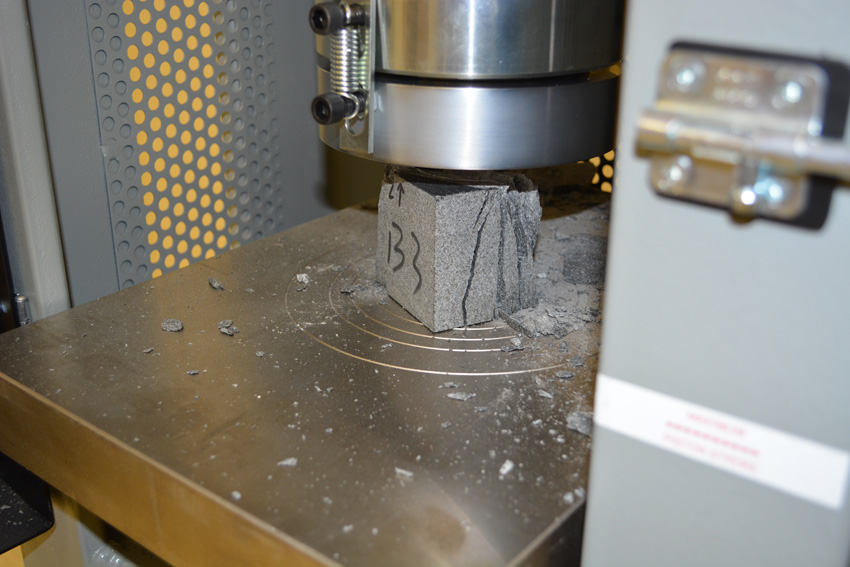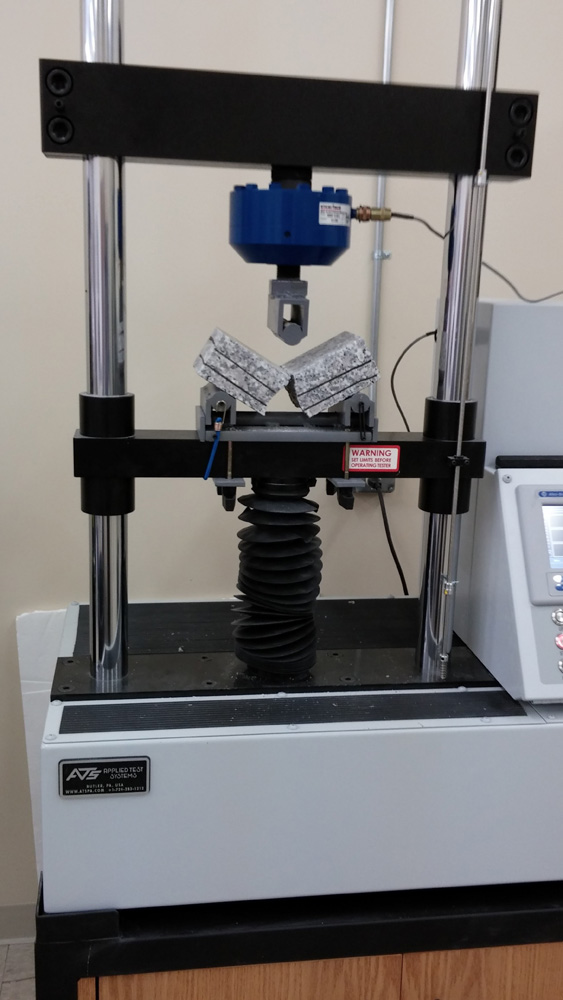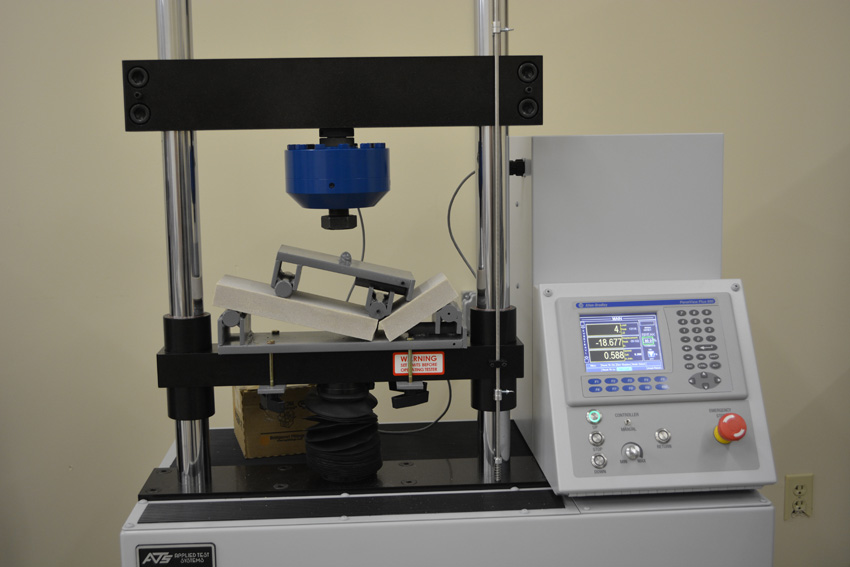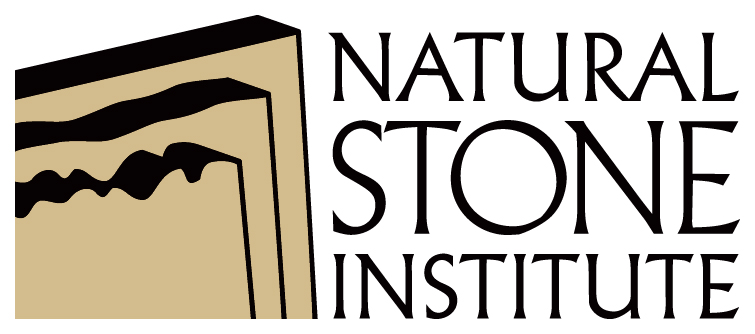The Importance of Testing When Specifying Natural Stone
 1 AIA LU/HSW; 0.1 IACET CEU*; 1 AIBD P-CE; AAA 1 Structured Learning Hour; This course can be self-reported to the AANB, as per their CE Guidelines; AAPEI 1 Structured Learning Hour; This course can be self-reported to the AIBC, as per their CE Guidelines.; MAA 1 Structured Learning Hour; This course can be self-reported to the NLAA.; This course can be self-reported to the NSAA; NWTAA 1 Structured Learning Hour; OAA 1 Learning Hour; SAA 1 Hour of Core Learning
1 AIA LU/HSW; 0.1 IACET CEU*; 1 AIBD P-CE; AAA 1 Structured Learning Hour; This course can be self-reported to the AANB, as per their CE Guidelines; AAPEI 1 Structured Learning Hour; This course can be self-reported to the AIBC, as per their CE Guidelines.; MAA 1 Structured Learning Hour; This course can be self-reported to the NLAA.; This course can be self-reported to the NSAA; NWTAA 1 Structured Learning Hour; OAA 1 Learning Hour; SAA 1 Hour of Core Learning
Learning Objectives:
- Explain why and how ASTM test standards help ensure safety and quality of a natural stone application.
- Describe which ASTM and/or ANSI tests are applicable to interior, exterior, and walking surface applications.
- Discuss how to interpret test results and their implications for material selection.
- Create a plan using relevant test data to select the proper stone for specific applications to ensure a safe occupied space.
This course is part of the Natural Stone Academy
ASTM Test Standards Relevant to Natural Stone
Now let’s take a look at the commonly used ASTM Test Standards relevant to natural stone. The tests can be divided into two broad categories: those that pertain to the stone’s physical performance, and those that tell us something about how the stone will perform under certain circumstances.
ASTM C97: Absorption and Bulk Specific Gravity of Dimension Stone: Absorption is a measure of a stone’s porosity; this characteristic is an indicator of both its stain resistance and possibly its performance in cold, wet environments where it will be subjected to freeze-thaw cycles.
ASTM C170: Standard Test Method for Compressive Strength of Dimension Stone: This test measures a stone’s resistance to crushing pressure.
ASTM C99: Standard Test Method for Modulus of Rupture: This test measures the bending or flexural strength of a stone material under a single-point load.
ASTM C880: Standard Test Method for Flexural Strength of Dimension Stone: This test evaluates bending strength using two points of loading and a sample that is the actual thickness of the stone to be installed.
ASTM C1353: Standard Test Method for Abrasion Resistance of Dimension Stone Subjected to Foot Traffic Using a Rotary Platform, Double-Head Abraser: This test determines the degree to which a stone material can withstand scratching or abrasion.
ANSI DCOF (dynamic coefficient of friction): This test measures slip resistance of an object in motion.
ASTM C1354: Strength of Individual Stone Anchorages in Dimension Stone: This test evaluates the performance of individual anchors with a specific stone product.
Which Tests for Which Application?
Exterior and interior applications each have their own specific considerations. In general, if the stone is going to be installed outside, it must be resistant to weathering and decay, as it could be exposed to temperature extremes, freeze-thaw cycles, pollutants, and chemicals such as deicers. Because stones in interior applications are sheltered from the elements, the range of choices is much wider; however, there are special considerations for interior stones that are to be used in flooring applications or installed in locations where they could be exposed to chemicals, grease, or prolonged moisture.
Once you have determined the application and whether the stone is to be used indoors or outside, you can begin to formulate a plan to help guide future specifications. The plan basically outlines the process that you will follow for each general application. It will help ensure that your specification is thorough and that you have considered all of the pertinent tests for that particular application. While we will look at this in more detail soon, following are some general considerations.
If the stone is being used in a structural capacity, you should seek test data for compressive strength and flexural strength. If the stone is to be exposed to the elements, study the stone’s absorption, porosity, and permeability. In addition, you may want to seek test data for how it reacts to freeze-thaw cycles. If the stone is to be installed in a vertical application, study the anchorage system and specify ASTM C1354. If the stone is to be used in a floor areas which receive foot traffic, it should be tested for abrasive hardness and slip resistance. Absorption and density are also important considerations.
Natural Stone Testing: Testing for Building Stone Applications
Exterior stones must be able to withstand the full range of stresses to which they will be exposed. Depending on the application and location of the project, these may include various loads and environmental stresses.
Gravity exerts a downward load on a stone or assembly, and in vertical applications must be borne by the anchorage system. If used structurally, stones on the bottom of a wall must be strong enough to withstand the weight of the material bearing on it. Stones used in vertical applications experience wind loads; these exert both positive and negative pressures and tend to be stronger at building corners or near discontinuities. Wind loads are perpendicular to the stone face or wall assembly. Seismic loads result from accelerations of the earth during an earthquake or aftershock. These forces may be perpendicular or parallel to the stone face. Design of assemblies is usually governed by the windload, as it is typically greater than the seismic load, although exceptions do occur.
Exterior stones may be exposed to freeze-thaw cycles and to thermal expansion and contraction. They may be exposed to rain, snow, or hail, as well as pollutants and chemicals such as carbon monoxide and sulfates. Exterior stones used as pavers may experience heavy compressive loads from vehicle traffic; they also must be able to resist abrasion and provide slip resistance.
Compressive and Bending Strength
Because strength is such an important consideration for outdoor applications, let’s take a closer look at ASTM tests that evaluate compressive and flexural strength.
ASTM C170: Standard Test Method for Compressive Strength of Dimension Stone
This test is used to measure a stone’s resistance to crushing. It requires cubic or cylindrical specimens that measure between 2 and 3 inches in all dimensions. A ram is used to apply pressure to the stone until it fails or “smashes.” The compressive strength of the sample is reported as the failure stress in either pounds per square inch (lbs/in2) or MPa.
At least five specimens for each of four conditions should be tested, and they should be as flat as possible and free of nicks or other flaws, as these can negatively impact strength. In some instances, the testing laboratory may have to refinish the specimens to produce acceptable surfaces.
A higher compressive strength indicates that the stone can withstand a higher crushing load. The Materials Specifications put forth minimum values for compressive strength for each stone type; for example, at least 1,800 psi (12.45 MPa) for marble and 19,000 psi (131 MPa) for granite. Compressive strength—or the load at which the stone fails—is usually much higher than the actual load the stone must resist. The industry has established safety factors for various stone types, which help determine the allowable load for that stone. For example, if the safety factor for a given stone is 4, you would divide the compressive strength for that stone by four to obtain the maximum allowable load to which that stone should be subjected.

ASTM C170 measures a stone’s resistance to crushing pressure, or compressive strength.
Bending Strength: ASTM C99 and C880
Two ASTM tests evaluate the bending or flexural strength of a stone material. The first is ASTM C99: Standard Test Method for Modulus of Rupture. For this test, stone specimens are supported near the ends, creating a kind of “bridge,” and a downward load is applied to the top until the stone fails. This test was thought to have been influenced by a preexisting test that was developed to test bricks, and it uses specimens that measure 8 by 4 by 2¼ inches—the dimensions of a standard brick.
The test has some shortcomings. The short, thick test specimen behaves like a “thick beam,” with a high shear-to-moment ratio, and so does not experience the flexural stresses that a thinner specimen would. For this reason, the test results tend to be high. Second, because the load is applied at a single point mid-span, the bending stresses are concentrated in the middle of the specimen. However, stones are heterogeneous materials with varying grain sizes. A specimen may contain weaknesses near the ends that will not be exposed during ASTM C99 testing because of the mid-span loading.

During the ASTM C99 test, a downward load is applied to the middle of a short, thick stone specimen.
ASTM C880: Standard Test Method for Flexural Strength of Dimension Stone
differs from C99 in two key ways: First, this test utilizes test specimens that are the same thickness and with the same finish as the stones that will be used in the actual application.The second difference that distinguishes ASTM C880 from the modulus of rupture tests is that the flexural strength test is conducted with quarter-point loading. Instead of applying the full load at single location at the midpoint, the total test load is split: half is applied one-quarter of the distance from one support; the other half one-quarter of the distance from the other support. This way, the entire center half of the span is subjected to the same maximum bending moment, or stresses. This method is more likely to expose any local weakness in the stone. For these reasons, C880 is superior to C99.
As with C99, the load in C880 is increased until the specimen breaks. Flexural strength is then calculated using a formula based on the geometry of the test conditions.
Flexural strength is expressed as lbs/in2 or MPa. A higher flexural strength or modulus of rupture indicates a higher bending strength. The required minimum values, as defined in the Materials Specifications, range from 400 psi (2.8 MPa) for low-density limestone to 1500 psi (10.3 MPa) for granite.
As with compressive strength, a safety factor is used to ensure the actual loads never come close to the flexural strength, or the load at which the stone will fail.

ASTM C880 measures flexural strength by applying a split load at two points until the stone fails.











